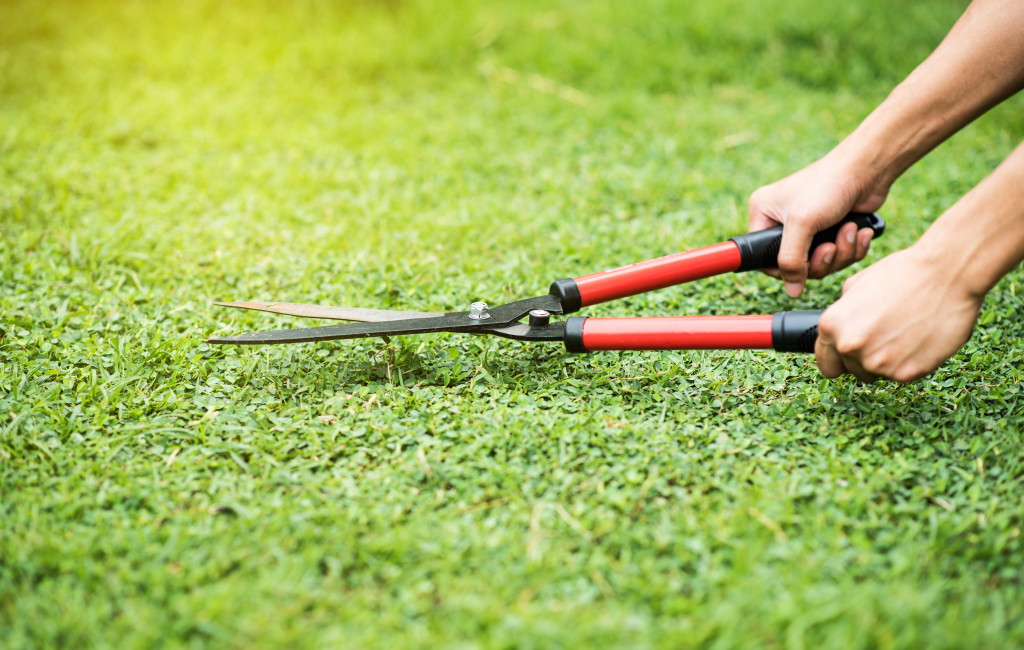Lawn care is one of the most common sources of homeowner frustration. Whether it’s an unruly patch that needs a trim, a weed-infested lawn, or a patchy green carpet with bald spots, there are plenty of ways for your yard to disappoint you.
But with these eight tips from the pros, you’ll be able to keep your lawn looking fresh and lush all year round!
Pick a type of grass that is best for your climate
Cool-season grasses like fescue and bluegrass will handle cold weather, while warm-season grasses like Bermuda and Zoysia can take the heat. Healthy grass is important because it forms the foundation for a lush yard, so be sure to pick the right grass type for your climate.
Water your lawn deeply and infrequently
Instead of watering every day or once per week, water deeply with longer periods between sessions. This will stimulate deep root growth that produces healthy, drought-resistant grass.
Consider installing a sprinkler system on your property to ensure that your lawn is watered evenly and efficiently.
Aerate your lawn once a year
Simply run a core aerator over your property to make holes that help infuse air, nutrients, and water into the grasses’ root systems. You can rent an aerating machine or bring in a professional for this one-time task for a beautiful yard all year round.
What an aerator does is that it basically pulls out the plugs of soil, and this allows air, water, fertilizer to penetrate more deeply into the roots. It also helps with thatch problems where you will find patches of grass that are yellow or brown.
Pesticide your lawn correctly for healthy grasses
While pesticides can help keep away bugs like grubs and other pests, avoid using them indiscriminately. Instead of spraying the entire lawn, only spray problem areas like patches of weeds or where pests like grubs are known to gather.
The advantage is that you’ll only kill the pests without harming other helpful organisms in your lawn, resulting in healthier grasses overall. Plus, you won’t have to worry about accidentally killing your flowers or trees like you would with a full-blown pesticide treatment.
If you decide to use pesticides, be sure to wear protective gear like gloves and eyewear to keep yourself safe from any accidental spills or leaks. And make sure the product is appropriate for the type of pest you’re trying to kill!
Rake your grass to rid your yard of any pesky leaves
Leaves are great for compost, but not so much in your lawn. Always rake up any fallen leaves on the property to keep them from suffocating the grasses’ roots. You can also invest in a leaf blower or some powerful vacuums that will make this task a breeze.
Allow your lawn to go dormant during the winter months
It’s normal for grasses to enter a state of dormancy during cold weather; however, this can cause problems if you have a thick lawn.
Letting your yard go dormant in the winter months will help keep away an overgrowth of weeds like crabgrass and dandelions. It will also help the soil rest and recover from all the stresses of the winter months, resulting in thicker and healthier grasses next spring.
Trim your lawn with sharp tools like shears or clippers instead of bladed ones

It’s better to use a pair of sharp scissors over a garden shear when trying to cut back weeds and tall grasses. Bladed tools will not only cut into lawns, but they’ll also do a poor job of cutting back tall and woody weeds that result in ragged cuts.
This will induce the grass to die back. If you use shears, make sure they’re high-quality ones as cheap ones can break easily and leave jagged edges behind. Plus, be sure to cut above the crown of the grass to avoid cutting into the root itself.
Spray down your lawn or reseed bald patches with sulfur powder or a thick layer of mulch
If you have bald spots in your yard, then consider either spraying them down with water from a spray bottle or covering them up with some thick layers of mulch. Both options are effective at keeping away grasses that can cause potential problems with your lawn.
Sulfur powder is also another good option if you have stubborn patches of weeds, as it’s known to inhibit the growth of many types of grasses.
These tips will set you up for success with a healthy and lush lawn all year round. Just remember to always keep your yard hydrated, aerated, pesticide-free, raked up, free of fallen leaves, properly trimmed with sharp tools, and not suffocated by too much grass.



